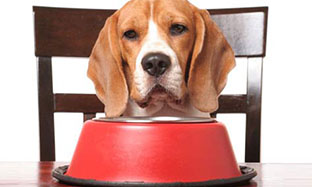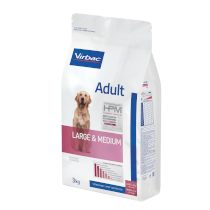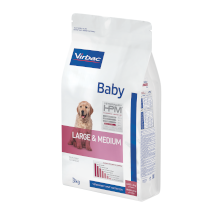 (1).jpg)
How to help my obese dog lose weight
Obesity in dogs is a growing concern among pet owners. Just like humans, overweight dogs are susceptible to various health issues, including heart disease, diabetes, and joint problems. Recognizing the signs of obesity and taking proactive steps to help your dog lose weight is essential for their overall well-being. Let us discuss how to determine if your dog needs to lose weight, what causes weight gain in dogs, ways to help them shed those extra pounds and best strategies for weight management in dogs.
Understanding Dog obesity and overweight : Causes and Risks
If you are unsure whether your dog is overweight, there are some simple ways to assess their condition:
- Hidden Ribs: Run your hand along your dog's chest and gently push to feel their ribs. If you cannot feel the ribs due to excessive fat covering them, your dog is likely overweight.
- Sausage Profile: Observe your dog's back when standing. A healthy-weight dog should have a slight hourglass figure, with a small waist indent. If your dog's profile is straight like a sausage, it indicates excess weight around the middle.
- Big Belly: When your dog stands, check if their chest dips down lower than their belly. If their chest and belly form a parallel line with the ground, it's a clear sign that your dog needs to lose weight.
What Causes a Dog to Gain Weight?
Weight gain in dogs is primarily influenced by diet and exercise. Daily physical activities like walking and playing are essential for maintaining a healthy weight. However, the key factor in weight management for dogs is calorie restriction. You must monitor your dog's daily food intake focusing on both the overall quantity and protein to carbohydrate ratio, including treats and snacks.
Certain medical issues can also result in weight gain, which need to be ruled out by your veterinarian.
How Many Calories Does My Dog Need to Eat to Lose Weight?
The number of kilograms your dog needs to lose depends on their age, size, and starting weight. As a general guideline, aim to reduce your dog's total calorie intake by 15 to 20 percent for safe and gradual weight loss. Rapid calorie reduction can pose health risks to your dog and is definitely not advisable. Your veterinarian will help by recommending an ideal gradual weight loss program based on your pet’s age, lifestyle and breed. A specific weight loss commercial diet may be also recommended by your vet.
Now that you have identified that your dog needs to shed some kilograms, let us explore effective strategies for healthy weight management:
- Cut Back on Treats: Replace high-fat, calorie-rich treats with low-calorie dog treats. If treats are given at multiple times throughout the day, gradually reduce the number of treats given. Often treats are given to keep the pet busy. Instead of treats, opt for toys that can keep your pet busy and mentally stimulated.
- Focus on Protein, Cut Back on Carbs: Opt for low-carb, high-animal protein dog food. Proteins provide greater satiety as compared to carbohydrates, thus providing a sense of fullness for longer and preventing constant begging for food. Consult your veterinarian for guidance on choosing the best weight management dog food.
- Add Healthy Fibre: Incorporate high-fibre snacks like carrots, apples, pumpkin, etc.into your dog's diet. These options help your dog feel full while consuming fewer calories. If on commercial pet foods, opt for premium foods that are rich in healthy fibres.
- Keep Hydration in Check: Ensure your dog has access to fresh, clean water at all times. Sometimes, dogs mistake thirst for hunger, so proper hydration is vital for overall health.
- Reward with Fun, Not Food: While it is tempting to use treats as rewards, consider using non-food rewards like playtime or belly rubs. If you do offer treats, use high-protein options in moderation.
Track Progress Each Month
Monitor your dog's progress by assessing their body condition and conducting monthly weigh-ins at the veterinarian's clinic.
What If My Dog Is Not Making Any Progress?
Remember that weight loss in dogs is a gradual process. Be patient and aim for steady progress, typically 0.45 to 2.27 kgs per month, depending on your dog's age and condition. If your dog is not losing weight despite your efforts, consult your veterinarian for additional guidance. They may recommend prescription foods or tests to rule out underlying medical issues hindering weight loss.
Conclusion
Helping your obese dog lose weight is a crucial step in ensuring their long-term health and happiness. By recognizing the signs of obesity, making dietary adjustments, and promoting a healthy lifestyle, you can embark on a successful weight management journey for your furry companion. Remember that a healthier weight not only improves your dog's quality of life and lifespan but also strengthens your bond with them.
1. How long do obese dogs live?
An obese dog typically has a shorter lifespan than a healthy-weight dog. Studies suggest that obesity can reduce a dog’s life expectancy by up to two years. Excess body fat strains the heart, joints, and organs, increasing the risk of conditions such as arthritis, diabetes, and heart disease. Helping your dog achieve and maintain a healthy weight is essential to improving both lifespan and quality of life.
2. Are weight loss supplements safe for obese dogs?
Weight loss supplements should only be given to an obese dog under the guidance of a veterinarian. While some products claim to support fat metabolism or suppress appetite, not all are backed by scientific research. Inappropriate use may lead to nutritional imbalances or side effects. Always prioritize a vet-approved diet and exercise plan over unregulated supplements.
3. How can I prevent obesity in my dog?
Preventing an obese dog starts with balanced nutrition, portion control, and regular physical activity. Stick to measured feeding schedules, limit treats, and avoid feeding table scraps. Engage your dog in daily walks, play sessions, or agility exercises. Regular vet check-ups also help track your dog’s weight and catch early signs of weight gain before it becomes a concern.
4. How quickly should an obese dog lose weight?
A safe rate of weight loss for an obese dog is around 1–2% of their body weight per week. For most dogs, this translates to 0.45 to 2.27 kilograms per month, depending on their size and overall health. Rapid weight loss is dangerous and can lead to health complications, so always follow a gradual, vet-supervised plan tailored to your dog’s specific needs.
5. What is the best diet for an obese dog?
The best diet for an obese dog is one that is low in carbohydrates, high in animal-based protein, and rich in healthy fiber. These components support satiety, preserve lean muscle, and regulate calorie intake. Many veterinary-approved weight management formulas are designed to meet these criteria. It’s essential to avoid filler-rich, high-calorie foods and consult your vet for a customized feeding plan based on your dog’s breed, age, and activity level.




.png)
.png)

